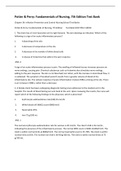College aantekeningen
Class notes Environmental Economics Natural Resource and Environmental Economics, ISBN: 9780321417534
- Instelling
- Tilburg University (UVT)
Here you can find the class notes of the course environmental economics. Everything is fully covered in the notes from the lectures by Reyer Gerlagh at Tilburg University.
[Meer zien]














